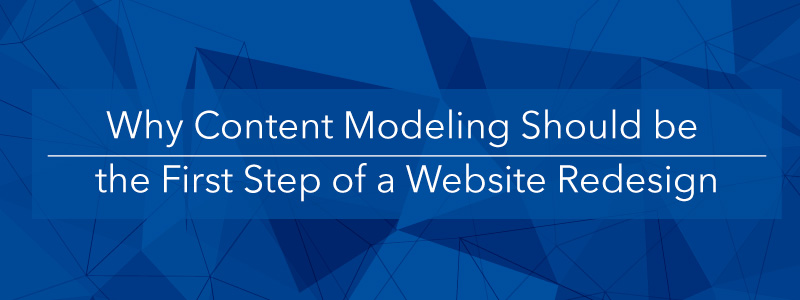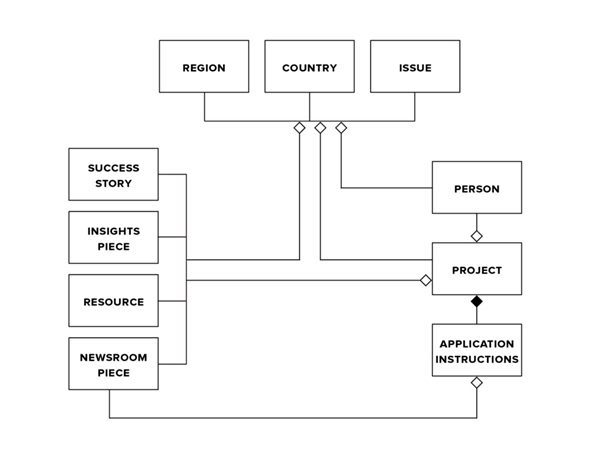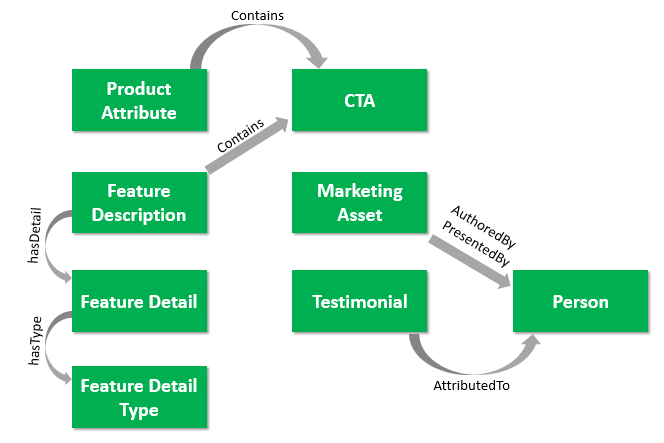
Once upon a time, we lived in a browser-centric world.
Today,
it’s mobile, not the browser, that sits at the center of our digital
experiences. We consume content on the go. We ask questions to Siri,
Cortana and Alexa, and they give us answers. We no longer process
content only by reading, but also by hearing.
It’s an exciting time.
Is Your Content Trapped and Yearning to Breathe Free?
It’s
doubly exciting for content creators because we have more channels than
ever to deliver content to our target audiences. But we must ask: is
our content modeled, structured and stored in ways that reach those
channels?
When content planned for a browser-centric world is co-mingled with
layout, it gets trapped inside divs and spans with no way out. What a
waste!
In a previous CMSWire article,
I wrote about the benefits of a
structured content approach to avoid
holding content hostage. I argued that when you plan and manage content
outside of an interface, you set it free. It lives on your website, but
can travel freely to faraway places. That freedom lets your content find
its target audience wherever they happen to be.
In this piece, I’ll dive into content modeling, a critical element of creating structured content.
One Example of a Content Model
Recently, Josh Tong, digital content strategist at IREX, helped plan and implement a site redesign. IREX
is an independent nonprofit organization dedicated to building a more
just, prosperous and inclusive world. Creating a content model saved
countless hours during and after the redesign and resulted in a new site
aimed at better meeting the needs of its visitors.
Here’s the content model IREX used:

The IREX content model plots its building blocks of content and the
relationships between them using the rectangles in the image above. For
example, a success story could be associated with a region, country,
issue or project.
A success story about training teachers to improve students’ computer skills in Tunisia would then appear on
1 region page
1 country page
2 issue pages
1 project page
Without
such a content model, the IREX content team would need to add the same
success story to each of these five pages manually. To remove the
success story later, another five manual edits would be required.
According
to Tong, "Multiply that by the number of pieces that we manage in a
year and the number of manual changes would quickly become
unmanageable."
Adding Relationships to a Content Model
Recently, I created a content model to describe the products my company sells. Here's what my model looks like:

Some of the relationships captured in our model:
- Product attributes and feature descriptions both have calls to action (CTAs)
- Each feature description has feature details
- Each feature detail represents a certain feature detail type such as benefit or how-to-use
- A marketing asset is authored or presented by a person
- A testimonial is attributed to a person
Like
the IREX site strategy, my company's content types also appear in
multiple sections of our site. For instance, our
homepage features four
customer testimonials. Our content model gives us the flexibility to add
one or more of those testimonials to various product pages, where they
can serve as proof points for our product.
IREX's Tong notes that
a content model is essential "if you’re creating a moderately complex
site, one that involves tagging, sorting, filtering, personalizing,
reusing or hiding content based on business rules or users' input."
The Importance of Content Modeling
If
you want content to surface when and where it's needed by your target
audience, it needs to go beyond web pages and be planned independently
from your website structure.
 The importance of content modeling cannot be understated.
The importance of content modeling cannot be understated.
Model the structures and relationships that
exist in the real world because those structures and relationships will
remain constant as your content moves from website to mobile to IoT
device.
According to Carrie Hane, principal strategist at Tanzen, "To meet the demands of content in 2017 and beyond, it's
imperative that we think in terms of content types and not web pages. Sure, web pages still exist, but we have to think of them as a display
of a specific set of information, not the structure of the information
itself."
Make Content Part of Your Design Process
At
IREX, content models are conceptualized at the beginning of projects,
based on learning during stakeholder interviews and user research. "It's
like drafting an outline before writing an article, or sketching
wireframes before a team meeting. The point isn't to get it exactly
right on the first try," said Tong.
These early drafts help the
IREX team think through options and put everyone in the organization on
the same page. According to Tong, "As the project proceeds, the content
model gets refined based on the decisions that we make as a team. It
just happens as part of the design process and it saves time by
facilitating productive conversations along the way."
Laying the Content Foundation
 The
content model is like the foundation of a house. Once the cement is
laid, the really exciting things come from building atop that
foundation. The IREX team recently launched a news update module
aimed at making key pages of their site more useful to visitors.
The
content model is like the foundation of a house. Once the cement is
laid, the really exciting things come from building atop that
foundation. The IREX team recently launched a news update module
aimed at making key pages of their site more useful to visitors.
"Because we were starting with a robust content model, we didn't need to
go back and add metadata fields in the CMS, tag hundreds of pages or
retrofit content types," observed Tong.
"It was relatively easy and
inexpensive to build the new functionality because we designed our
taxonomy and content types with the future in mind."
Future-Proofing Your Content
According to Tanzen's Hane, "Because we cannot predict how our content might be used in the future, we need to set up content types that prepare us for anything."
Here at DNN Software, we're starting to think about where our content will surface in the future.
For
example, as proof of concept, we developed an Alexa skill to access
content in
our CMS. Now, when we ask the Amazon Echo a question, Alexa
retrieves answers based on semantic tags associated with content items
in our content model.
Content will increasingly surface via
voice user interfaces. And that begs the question, "Hey Alexa, where
will content surface tomorrow?" With a strong content model, your
content will be ready however Alexa responds.
Note: This post was originally published at CMSWire under the title "How Content Modeling Helps Set Your Content Free."
Related White Paper
 Title:
Title:
How the Right CMS Makes Content Available When and Where Customers Need It
Description:
To have your content reach customers when and where they need it, you need a CMS that takes a structured content approach. By storing content outside of an interface, you make it available for today's technologies, along with the technologies that will come tomorrow.
Download the white paper now.